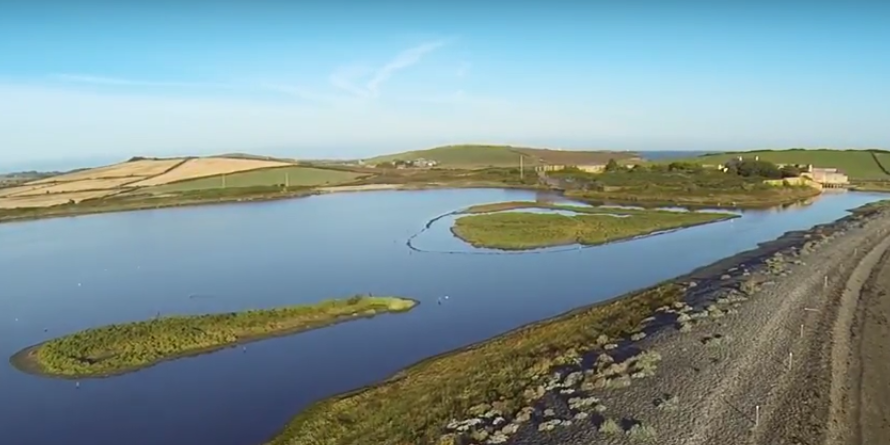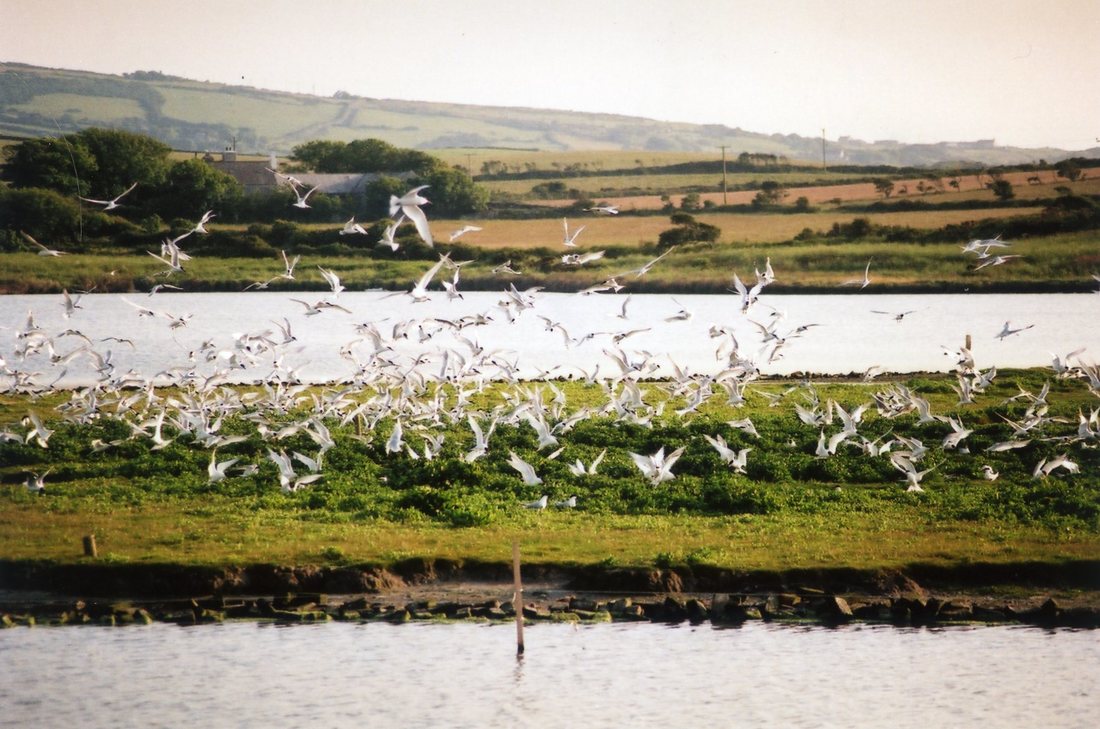|
News travels fast amongst the birdwatching community- bad news even faster. It’s very, very quiet at Cemlyn. Earlier this year and following a run of excellent breeding seasons, North Wales WildlifeTrust with help from the Roseate Tern LIFE Project, installed rafts on Cemlyn lagoon. This was a pro-active measure to encourage Common terns, protect breeding birds against predation and to relieve nest site ‘pressure’ given the continued expansion of the Sandwich Tern colony. Our early optimism for the 2017 breeding season was premature and we are very sad to report that despite a good start, 2017 has been a very difficult year and the terns have abandoned nesting and dispersed. From mid-May onwards, it became obvious that Cemlyn’s lagoon islands were being harassed by otters – a species that just like the terns, benefits from strong legal protection. Initially, the predation targeted black-headed gull nests however, the disturbance and panic created by these predators kept the gulls and the terns off the islands their nests for long periods, often during wet or cold nights. Concerted and prolonged predation of protected species by another protected species presents a complex management dilemma for North Wales WildlifeTrust. Following discussion with Natural Resources Wales, a number of attempts were made to deter the predators but these were generally unsuccessful. As the breeding season progressed the nesting terns became increasingly unsettled and the many nests that were abandoned created additional opportunities for predation by corvids and the large gulls. The main part of the tern colony was largely abandoned by 17th June however, Common, Arctic and Sandwich Terns continued to try to nest on the smaller island in the lagoon. Despite the erection of a protective fence, these remaining birds subsequently deserted as well. Predation and disturbance by land mammals and birds on such a scale is not a unique event at Cemlyn or other colonies; the last such events at Cemlyn were in 2007 and 2008. Where the main ‘culprits’ were heron and geese. The key thing now, as then, is that North Wales Wildlife Trust anticipate and respond to the threat of predation. Longer term plans and measures for protecting the colony will be put in place before the return of the terns in the Spring of 2018. Working with other organisations with experience of dealing with such issues, we will put in place a series of measures to ensure that the Cemlyn terns get as much protection and the best breeding chances possible; these measures will of course, be appropriately licenced and consented by the Natural Resources Wales as the statutory environmental and species licensing authority. Most of the adult terns, having abandoned breeding, are now moulting and have dispersed away from Cemlyn. They continue to take advantage of and feed off the shoals of sandeels and whitebait around Anglesey’s coasts. In the few short weeks of our summer, the small fish stocks around Anglesey’s coasts will give them the strength and nutrition for the long journey south.
We are asking our coastal communities, sea anglers, walkers on the Anglesey Coastal Path and our wildlife watchers to keep an eye out for large flocks of Sandwich terns – it would be interesting to know where they spend time before the long migration south for winter. Guest Blog by Alison - Roseate Tern Community Engagement Officer
0 Comments
Your comment will be posted after it is approved.
Leave a Reply. |
More Blogs to Read
AuthorThis blog is maintained by various people from the project team. Archives
August 2020
Categories
All
|
Roseate Tern LIFE Project is supported by the LIFE Programme of the European Union
LIFE14 NAT/UK/000394 ROSEATE TERN
LIFE14 NAT/UK/000394 ROSEATE TERN





 RSS Feed
RSS Feed